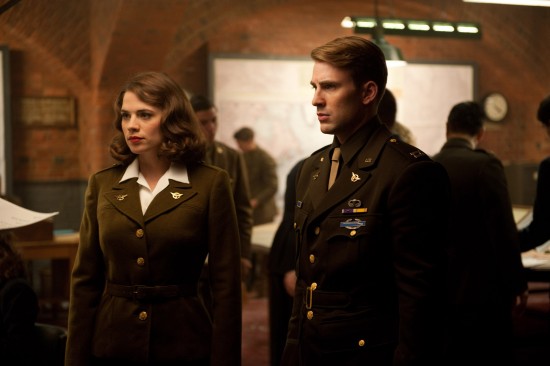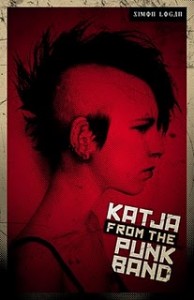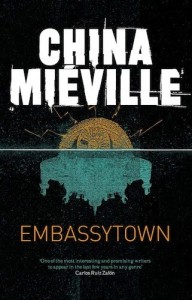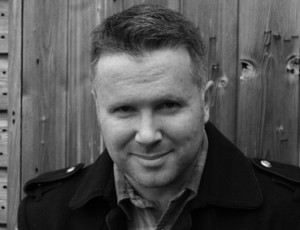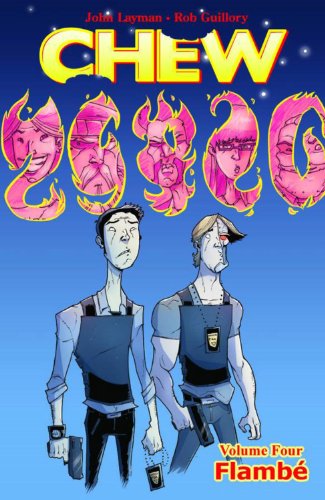
Chew Volume 4: Flambé by John Layman & Rob Guillory is out September 2011.
Kate West: So first off, I would like to ask a bit about Chew’s central character; Tony Chu. To me Tony’s ‘cibopathic’ abilities are central to the great dark sense of humour running through the comic. Who came up with the parameters of his ability?
John Layman: I figured out the story and the concepts behind it. Several scripts were completely written before Rob came on board. He was instrumental to the characters’ LOOKS, though.
Rob Guillory: Yeah, John had a very solid grasp of who the central characters were by the time I came around. My job was finding the right visual style that matched the people and world that he came up with.
KW: As a follow on to my first question, will your loyal readers ever find out why Tony can’t get any psychic readings from beets?
JL: Probably not. “Origins” are not something I am particularly interested in. Inevitably, no answer would probably be satisfying enough, so why not leave it unanswered.
KW: How do you come up with the names for the characters abilities?
JL: I was an English major in college and particularly interested in etymology, the study of word origins (the only origins I AM interested in, I suppose.) The names of abilities are just a mix of root words, usually a mash-up of Greek and Latin.
RG: And I can proudly say that more recently I’ve helped out with naming a couple of them!
KW: John, how does working on Chew differ from other projects you’ve worked on? Is there more or less pressure to be successful with something that is all of your own creation?
JL: I’ve been a little intimidated by the awards, I think. Usually getting an award freaks me out more than inspires me and I have a few weeks of stage fright and self-doubt between the time I win an award and the time I finish the next issue. Every issue I worry is going to suck, and derail all the momentum the book has built. And then after a few weeks of torturing myself I finish a new issue and find myself pretty happy with it—and then worried about the next issue.
KW: Rob, from what I can gather this is your first major project, please correct me if I’m wrong; are there any hidden Guillory gems fans can search for?
RG: Yeah, CHEW really is my first major comic outing. Everything I’ve done before was way smaller in scale and not as high profile. Check out my work on Ape Entertainment’s Teddy Scares. It was a lot of fun.
KW: Chew was featured in the hugely popular The Walking Dead series which Robert Kirkman has stated he has no intention of ending anytime soon. Can the same be said of Chew? Or do you have a definite idea of how the series will end?
JL: Nope. CHEW is a finite novel and has a definite ending (Issue #60.) I can’t imagine NOT working toward an ending. It would make the book pointless, in my opinion. I want everything to lead somewhere, and have repercussions. And, really, I just like endings. I don’t write anything without having some general idea of the ending.
KW: Speaking of The Walking Dead, it has exploded since it was adapted to a television series and aired on AMC last year. It’s been confirmed that Chew is also to receive its very own T.V adaptation – what are your hopes for the T.V series? How much involvement will you have in the creative process?
JL: My involvement is still being worked out. I’ll be involved as a producer, in some capacity, but I have no idea what that will mean. Both Rob and I recognize the show will not be 100% faithful, but we’re hoping it is faithful to the spirit of the book. And, judging by the pilot script we’ve read, it seems to be.
RG: The script’s awesome. It really captures the comic’s ability to walk a fine line between humor and some really grim subject matter. It’s probably as loyal an adaptation as it could be, given how crazy the book can get.
KW: Rob, you mention Dave Gibbons work on Watchmen as something you have studied in the process of making Chew, you must get asked this all the time, but are there any other artists you can name that have inspired you?
RG: Steve Ditko, John Buscema, John Romita Jr., Jim Mahfood, Dave Crosland, Tex Avery, Chuck Jones, Rumiko Takahashi and Akira Toriyama, just to name a few. My interests are very diverse, from older stuff, to more modern, to more cartoony and anime stuff. It’s all in there.
KW: Another question for Rob: one of the things I love about Chew is the use of colour; the muted pastel colours are so aesthetically pleasing and make for a great contrast to some fairly grim events. When I think of this contrast I usually flash to Tony being vomited on in the first Chew compilation, Taster’s Choice. Do you use a particular set palette of colours for a desired effect, or are they colours you just lean towards naturally?
RG: I use whatever feels right. I tend to think of different scenes in terms of color. If it’s a really intense scene, I tend to turn the saturation up to match it. And likewise, I turn it down for less intense scenes. I’m very experimental, and just have a pretty keen eye for what works and what doesn’t.
KW: John, are there parts of your own personality that you’ve passed onto the characters of Chew? Is there any character that particularly identify with?
JL: I like to think I am the most like Colby, but maybe I just say that because I find him the most fun to write.
RG: I’m definitely Tony Chu. A fairly normal guy, surrounded by a bunch of weirdoes, and thrown into outlandish situations.
KW: If you could both be one of the characters, who would you be?
JL: Colby. Again, he’s the most fun, and he seems to HAVE the most fun.
RG: I’d be Toni. Just a really fun, carefree character. I tend to be overly serious in real-life, so it’d be a nice break.
KW: Much as I love Tony Chu and John Colby, I have to admit I particularly look forward to Mason Savoy. His particular vernacular is really enjoyable to read. I enjoy the juxtaposition of his slick speech with against his dubious moral standing and readiness to often brutal violence. Are there certain characters that you enjoy writing more than others, and if so, why?
JL: Mason is the hardest to get a handle on, especially if I go a couple of issues without writing him. It takes a while to get him just right. Colby and Toni are my favourite. Again, they are the most fun, but they are also the most surprising and unpredictable.
KW: Do either of you have other projects that you can tell us about, or are we just to be spoilt with Chew goodness right now?
JL: I just finished a Godzilla series for IDW, but mostly I am just concentrating on getting a good several issues ahead of Rob, at least until I see how the TV show shakes out.
RG: I’ve got a few creator-owned things that I’m toying with, but who knows when they’ll be done. And I’ve got a few small projects for other publishers that I can’t really talk about yet. But CHEW is my full-time job, and will be for the next 40 issues.
KW: This is gonna be my final question…. You were at the San Diego Comic Con recently, was this your first time at the SDCC? Did you have a chance to go out and about and explore?
JL: I’ve been going to San Diego every year since 1991. The first time I went I drove downtown during my lunch-hour at my day job, parked on the street nearby, and saw the entire hall in an hour. Show has grown a bit since then. I don’t plan to EVER miss an SDCC.
RG: This was my sixth or seventh SDCC. I tend to wait until the last day to walk around, since I’m always working there. It’s a blast, but can be very overwhelming. I always enjoy it, but inevitably need a gigantic nap afterwards. HA.
Interview conducted by Kate West, Bookseller, Waterstone’s Edinburgh George Street
To read Kate’s review of the Chew series, click here.


